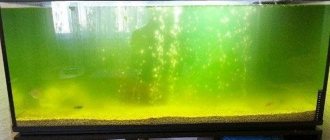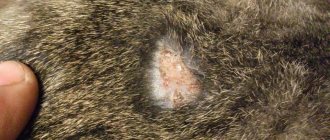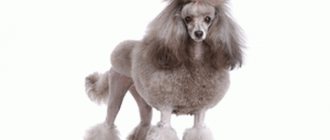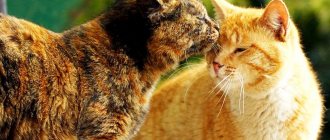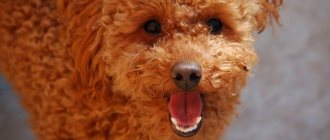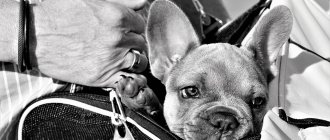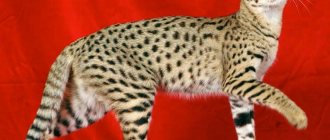Recently, the Indian duck has become one of the most popular birds in households and farming. All thanks to its unpretentiousness to growing conditions, feeding and productive characteristics - high egg production, as well as tasty, tender and healthy meat. Muscovy ducks do not require special care and can lead productive lives in almost any conditions.
Description and characteristics of the breed
Almost all Indian ducks are similar in appearance. Differences occur only in individual breeds, mainly:
- feather color;
- habits;
- fruitfulness;
- egg production;
- taste qualities;
- growing time;
- feeding features.
Appearance
Muscovy ducks have a wide variety, differ in many characteristics, but they have one thing in common - characteristic features related to appearance. Indian ducks have a large body and a wide, hanging sternum.
Indo-ducks have strong, webbed feet, much shorter than those of other poultry. They have large, strong wings that fit tightly to the body and a short neck.
On a small head there is a flat beak, and around the eyes there is a peculiar red growth that distinguishes them from simple ducks. If you touch it, you can smell a faint musky odor.
Indo-ducks' feathers fit tightly together, forming a waterproof coating that gives them a huge advantage when in the water. They love water, especially marshy ponds that are home to many different insects and larvae. It’s not scary if there are no bodies of water nearby; they also feel great on land and can splash around in an ordinary trough.
The color of Muscovy ducks varies depending on the specific breed. These are mostly dark colors with a greenish or purple tint.
As for weight and size, they do not have any significant differences. The weight of a drake can reach up to 6 kg, and females - up to 4 kg. However, wild ducks are 1.5-2 times smaller than domesticated ones.
Varieties of Indo-ducks
Many novice farmers or ordinary housekeeping enthusiasts cannot decide on the breed of Indo-ducks. Each of them has its own characteristics, so you need to correctly and profitably choose the breed that is more suitable for breeding or keeping in specific conditions. Muscovy ducks come in the following types:
- Black Indians. They fully live up to their name, as their paws, metatarsals and beak are also black. Only a greenish tint on the back and a purple tint to the rest of the feathers separates it from complete blackness. Their eyes are brown.
- White Indians. They have the appropriate color of feathers, without any shades or tints. The duck's beak is pink with lightening at the tip. The paws are yellow and the eyes are blue-gray.
- Black and white Indian ducks. They have appropriate shades, in which a dark color with pronounced tints predominates. White spots appear on the sternum, neck and head. Their eyes have a light brown tone. The legs are yellow, sometimes with black spots, and the beak is red.
- Brown wild breed . It has a beautiful and rich brown color. White feathers may appear on the wings, the number of which increases as the duck grows. The red beak has dark spots on its tip. The eyes, like the paws, are brown. Sometimes the coloring may be slightly different - brown feathers are green, and there are white feathers on the chest and head.
- Blue and wild blue duck . This breed is very rare and actually has blue feathers with darkening at the edges. The legs and beak of this duck are black. Eyes with a brown tint. The wild Muscovy duck has a similar feather color, but with a narrower rim. And when fully ripe, the upper cover turns white, and the black flat beak changes color to lilac-red. Paws and eyes are the same color.
Black Indian duck
White Indian
Black and white Indian duck
Brown Indian Duck
blue duck
Experienced poultry farmers claim that the brighter the color of the duckling, the more productive it will be, so when choosing ducklings, you should pay attention to their appearance.
Lifestyle and behavior
Domestic birds get used to their owners and their territory, so they do not go far and do not cross borders. This is one of the advantages of Muscovy ducks when breeding them. In addition, they do not need to be constantly grazed; they quickly get used to their route and can independently move around familiar territory.
This type of bird is very calm, but with a large number of them in one area and the presence of several adult drakes, they can show aggression towards each other. This usually happens due to feeding. Stronger males can kill weak ones, and sometimes even young offspring. In stressful situations, the female may stop laying or abandon her nest.
Indian women love fish, so they are attracted to anything shiny. It is better to remove all objects that remind them of a tasty treat: broken glass or mirrors, metal waste and other debris.
Range and habitats
In the wild, Indian ducks can be seen near lakes, rivers and other fresh bodies of water. They form into small groups to give birth to further offspring. They rarely gather in large flocks, and practically do not make flights.
Their feather lubricant is not as oily as that of other duck species, so they do not like to swim in cold water. In winter, it is dangerous for them to swim, since at sub-zero temperatures the wings freeze and the bird can drown.
Diseases and their treatment
Despite the fact that this breed has fairly good immunity, sometimes they still suffer from diseases and various parasites. It is very important to notice the disease in time and stop it, preventing the massive spread of the disease to the entire brood.
The most common parasite is considered to be the fluff eater. When it appears, the birds begin to behave restlessly, lose some of their feathers, and constantly make attempts to shake off the parasites. You can rid your Indian duck of these pests using a special bath.
To prepare it, take a bag of purified feed sulfur and mix it with sand. The resulting mixture should be sprinkled on the infected bird. This must be done until her complete recovery. As a preventative measure, you can pour this mixture into a trough and place it in the yard.
The birds will swarm in it themselves.
Another non-infectious disease is inflammation of the mucous membrane or goiter. This disease can appear due to improper feeding (low-quality food) or due to the ingestion of a foreign object (glass, nail, needle, etc.).
Owners usually quickly notice the problem due to a swollen goiter and changes in behavior. The bird does not eat; it often keeps its beak open, secreting a liquid with a sour odor.
You can get rid of catarrh by rinsing with a weak solution of soda, and ampicillin will help with inflammation. Vitamin deficiency Some diseases can be caused by improper care or feeding.
For example, a lack of vitamin A in the diet, which is found in fresh grass, carrots, milk, and pumpkin, leads to eye diseases. In winter, vitamin A can be replenished with grass silage flour mixed with legumes, and in case of severe deficiency, you can turn to the use of concentrated vitamins.
Advantages and disadvantages of Indoutka
Breeding indo-ducks does not require special knowledge and skills, but it has its pros and cons. The advantages include the following factors:
- resistance to various diseases, which has a greater impact on the survival of young offspring;
- unpretentiousness to feeding;
- high egg production;
- feel great in any environment;
- Indian ducks are good brood hens, even for hatching other bird species;
- delicious dietary meat.
As for the disadvantages, there are much fewer of them than advantages:
- small ducklings can peck at each other if the necessary conditions are not provided;
- addiction to shiny objects;
- slow growth and weight gain.
About the maintenance and breeding of the Muscovy Duck, watch the video below:
Feeding hatched ducklings.
The first day the chicks from the incubator do not yet know how to eat and drink. But they react very well to any movement. Therefore, an egg is taken, hard-boiled, crushed and sprinkled on the backs of the ducklings. Potassium permanganate is added to drinking water. The next day they feed the first semi-liquid mash of bran with milk and boiled eggs.
On the 4th day, a mash of cottage cheese, chopped onion, spinach and crushed grain (a little) is prepared for feeding. From the 5th day of life, ducklings begin to be fed with chopped boiled meat waste. When the hatch is 10 days old, boiled potatoes are added to the mash.
The number of feedings up to 10 days of age is 6-8 times a day, from 10 to 30 days 4-5 times a day, and after one month 3-4 times. From the age of 20 days, ducks begin to eat boiled mashed potatoes, and from the 40th day they switch to the diet of adult birds. The chicks can be fed with special food, and if you decide to feed them grain, it is better to purchase a mill.
The diet of ducklings is in our table.
| 10 days | 20 days | 30 days | 40 days | |
| grain bran, kg | 0,03 | 0,06 | 0,12 | 0,24 |
| sprocket, cake, kg | 0,001 | 0,002 | 0,004 | 0,008 |
| fish, bone meal, kg | 0,002 | 0,004 | 0,008 | 0,016 |
| low-fat cottage cheese, kg | 0,003 | 0,006 | 0,012 | 0,024 |
| return, kg | 0,005 | 0,01 | 0,02 | 0,04 |
| boiled potatoes, kg | 0,02 | 0,04 | 0,08 | 0,16 |
| feed yeast, kg | 0,001 | 0,002 | 0,004 | 0,008 |
| green feed, kg | 0,02 | 0,04 | 0,08 | 0,16 |
| chalk, gravel, kg | 0,003 | 0,006 | 0,012 | 0,024 |
| table salt, kg | 0,0002 | 0,0004 | 0,0008 | 0,001 |
| barley turd, kg | 0,01 | 0,02 | 0,04 | 0,08 |
| wheat flour, kg | 0,01 | 0,02 | 0,04 | 0,08 |
| corn shred, kg | 0,03 | 0,06 | 0,12 | 0,24 |
Direction of breed breeding
Depending on the purpose for which musk duck breeds are raised, their living conditions do not change, but the period of keeping and feeding is completely different.
Egg production
On average, an adult Muscovy duck produces about a hundred eggs per year. If all the necessary conditions are created, this figure can increase to 120 pieces, and each egg will have a mass of 60 to 70 g. For this, the bird needs a warm atmosphere in winter, as well as regular maintenance of cleanliness in the poultry house.
They need good lighting and ventilation of the room. If we add to this a list of useful substances and vitamins, then pets will certainly become record holders for laying eggs.
Under favorable conditions, adults begin to lay eggs from the beginning of the year, otherwise the difference will be about two months. Young ducks begin to lay eggs after six months, gradually increasing the number of eggs every month. At first, the monthly clutch is about 8 eggs, and when the bird reaches 12 months of age, the number of eggs reaches 16 pieces.
Egg laying is a cyclical process. After intensive laying, which lasts about 5 months, a molting period begins for 2-3 months.
Raised for meat
Young offspring raised for meat, if properly fed, gain weight in the first six months. The weight of a drake is up to 4 kg, and that of ducks is up to 3.5 kg. If the house is cold and damp, they will gain weight less quickly.
Many people try not to keep the bird for long. Indo-ducks can gain 2.5 kg within 2-3 months, which allows them to be sent for slaughter. At the same time, it is important to maintain cleanliness, observe conditions, and adhere to feeding rules so that the birds do not get sick. Otherwise, they may not gain weight well, and their meat will not be of such quality and taste.
How to properly maintain it?
To get a good result and raise an Indian duck, you need to follow simple rules of care.
General rules
Despite the fact that Indian ducks are not considered land birds, they do not tolerate dampness in places where they are kept. Take care of proper accommodation. You should not house more than four adult individuals per square meter.
If we are talking about ducklings, then their number can be increased to eight. These birds are unpretentious to the temperature of keeping them; it is not necessary to maintain heat in their habitat. It is important to maintain cleanliness and good ventilation. Change the bedding regularly; it can be made from small sawdust or straw.
You can't keep birds in a cage all the time. Ducks need to walk, especially in the warm season. Adults should be released no earlier than ten o'clock in the morning, since they lay eggs at an earlier time.
Make sure the walking area is clean. Remove nails, various metal parts, broken glass and other debris. Birds can swallow it or get their paws pierced. During the warm season, place a large basin or trough outside.
You can also dig shallow trenches and fill them with water. These “reservoirs” will be enough for musky ducks both for drinking and for rinsing.
Room
If in countries with a hot climate ducks of this breed can constantly live on the street, then the conditions of the middle zone allow this only in the summer. At other times of the year, indo-ducks need to be housed in a special poultry house.
Its height should be about 1.8 m, and the windows should be located at a height of one meter. Moreover, their total area should be 1/10 of the floor area of the poultry house. It is best to whitewash the walls of the duck house.
The floor is allowed with bedding, mesh, or combined. In this case, the thickness of the rods is allowed to be no less than 3 mm, and the mesh must be positioned at a height of approximately 25-30 cm.
The perch is made wide at a height of about 15-20 cm from the floor level.
It is necessary to maintain the temperature in the poultry house above zero degrees. During the period of laying eggs, the optimal temperature will be 18-20 degrees.
It is important to equip the feeder in the duckling house in such a way that all individuals can eat at the same time. Its height should be about 10 cm, width about 25 cm, and length about 5 cm for each bird.
Feeder
Trough-shaped containers are best suited for drinking. But watch their size, do not allow ducks to swim in them during the cold season. Take care of the dryness in the poultry house, because Indian ducks do not like dampness in the room.
It is also necessary to provide artificial lighting of about 5 W per square meter.
Nest
First of all, you need to create a nest.
Instructions:
- Step 1. Select a suitable nesting item. You can also use an ordinary box made of thick cardboard as a nest. Recommended dimensions: width about 30 cm, depth about 45 cm.
- Step 2. Place burlap or any other natural fabric on the bottom of the nest. Synthetic fabrics are absolutely not suitable. Make sure that the nests are in the dark.
- Step 3. Not far from the nest you need to arrange a feeding trough, as well as a container for drinking and bathing.
- Step 4. Up to three ducks can be placed in one nest. In this case, it is worth separating the laying hens from the breeding ducks.
- Step 5. Protect the nest from other ducklings. Otherwise, the mother duck may abandon her chicks and begin to care for the nestlings.
- Step 6. After two days of incubation, you can add up to 20 more eggs. But for this, the nest must first be expanded.
Nutrition
One of the distinguishing features of indo-ducks is their omnivorous nature. That is why their breeding and maintenance are considered a simple matter. But it’s still worth remembering that musky ducks need a balanced diet to gain weight and lay eggs.
First of all, you should take care of drinking. Birds must have constant access to water. In summer, a trough, basin or ditch filled with water can serve as a watering hole.
Ducks will drink from it, and they will swim and splash in it. But in winter, swimming is prohibited, so you need to take care of a drinking bowl that will prevent the duck from getting into it. During the winter season, each individual needs water in an amount of at least 0.5 liters per day. Birds should always have access to water
Water standards for individuals of different ages:
| Age | Norm in ml |
| First week | 100 |
| Second week | 150 |
| Third week | 250 |
| Fourth week | 300 |
| Adults | 500 |
If you don’t want to buy ready-made feed, you can make it yourself. To do this, you need to mix grains with nutritional ingredients.
Dry premixes, protein in the form of peas or lupine, and calcium are suitable as the latter. The grain base may consist of a mixture. Barley, wheat, oatmeal, and corn are necessary.
Feeding should be done three times a day. Approximately 10% of the total diet should be greens.
In warm weather, the bird itself will find it in the yard, but in winter it must be replaced with grass meal with legumes and silage. Choose your food carefully. It should contain vitamins, nutrients and trace elements necessary for this breed.
In addition, musky ducks need meat and bone and fish meal or waste from fish and meat. Vitamins need to be added to the food. This is especially important for young individuals, as well as sick and weakened birds.
Feed requirements table:
Wing clipping
Since this breed retains its flight instincts, care must be taken to trim its wings.
The following instructions must be observed:
- Step 1. Take thick gloves and sharp scissors. Gloves are necessary to prevent the bird from biting or injuring you.
- Step 2: Hold the bird between your knees.
- Step 3: Spread the wing. It is necessary to trim the longest feathers - the flight feathers.
- Step 4. Cut them to about halfway, that is, to the tubular part of the wing.
The manipulation is done with only one wing, since if both are cut off, the ability to fly will be preserved. This needs to be done once a season, but for many turkey ducks a one-time circumcision is sufficient.
You should not cut it too short, because in this case the bird will lose its attractive appearance, which is necessary to attract individuals of the opposite sex.
Features of breeding and raising Muscovy ducklings
Regardless of the method of breeding ducklings, to obtain a brood, select eggs from the first days of laying. Then carefully select them according to their characteristics - so that they are the same shape, weight and size.
The most fertile eggs are those collected within 14 days. When collecting, store them lying on their side at a temperature of 11 degrees.
Formation of broodstock
For propagation in the traditional way (by a brood hen), arrange a separate queen cell, which will contain 3-4 females and a drake. Then build a nest by placing dry leaves, sawdust or hay there.
Do not touch eggs selected for hatching with your hands. Indian ducks are excellent brood hens, so when there are 10 eggs in the nest, the female sits on the nest.
There should be water and food in the room so that the hen eats periodically. As the eggs warm up, she regularly turns the eggs over and moistens them with water.
The hatching period for ducklings is 32-35 days.
Breeding ducklings by a hen
Despite the fact that Muscovy ducks are good brood hens, the ducklings cannot do without the help of their owner. After the first chicks hatch, the duck continues to sit in the nest until the entire brood has hatched. Therefore, babies need to be placed in a warm, cozy place and provided with good lighting. A regular incandescent lamp is suitable for this, which will speed up the drying process.
In the first days, feed the ducklings hard-boiled eggs. At the same time, chop them and sprinkle them on their backs, since during this period they only react to movement. When they begin to move, the crumbs roll off and the chicks, noticing them, eat them.
After the end of the period allotted for laying, the unproductive eggs become unusable and the duck leaves the nest to take care of the offspring. When the day-old ducklings have dried and become stronger, place them under the hen.
In the morning she can already walk and feed them. After a week, they can already take baths, but before the procedure, a caring mother lubricates their feathers with her fat.
Incubation
When incubating ducks, the device must be heated to 38 degrees. After this, lay out the fertilized eggs in a horizontal position. Lay the largest ones first, and after 5 hours the rest. It is better not to use small eggs.
The incubator must be provided with the necessary air humidity. If such a function is not provided, then do it as follows - spray the eggs with a weak and warm solution of manganese twice a day. This cools the eggs and speeds up metabolism.
Eggs need to be turned and swapped periodically to ensure even heating. Hatching eggs may take a little longer to hatch than brood eggs. At the end of the period, gradually reduce the air temperature, check the eggs and help the ducklings hatch by opening the shells.
Place the hatched chicks in a brooder. If they are provided with proper care within 10 days, they will grow up strong and healthy.
Feeding and keeping chicks
Their further development depends on the correct feeding of Muscovy ducklings. The first step is to take care of favorable conditions in the poultry house. To do this, you will need to regularly maintain cleanliness and, if necessary, disinfect. This is also required for drinking bowls and feeders.
A review of duck drinkers and instructions for making them can be found in this article.
In the first week, the daylight hours for ducklings should be at least 18 hours, so the house must be equipped with appropriate lighting. As they grow older, daylight hours should be reduced by 1 hour every week. This is necessary for full development, since as Indian ducks grow older they need metabolism, which occurs better in the dark. If these rules are not followed, rickets may occur.
To develop, ducklings need adequate nutrition. From the very beginning, feed them grain mixtures and foods containing starch, protein and calcium:
- shell rock;
- chalk;
- starter feed;
- grain mixtures;
- corn, bone and barley flour;
- chopped meat and fish waste;
- boiled potatoes;
- fresh carrots.
Don't forget about greenery. If it is possible to walk on fresh, lush grass, then this will be the most acceptable option. The ducklings themselves will find the suitable and healthy greens they need for full development.
How to breed? Instructions for Beginners
Indian ducks reproduce quite well. Many farmers note that this breed is much easier to breed than other poultry.
Raising several families of Muscovy ducks is considered the most profitable. One family is formed from 3-5 ducks and one drake. The male may be the same age as the females or approximately 6 weeks older.
In the latter case, you can take a male from a previous bred batch. To prevent inbreeding, it is recommended to periodically take drakes from another farm.
It is possible to crossbreed Indian ducks with other breeds, but the resulting offspring will lose reproductive function. A family can be formed when the drake reaches 20 weeks of age. Until this point, you need to keep them separate from each other.
In spring, duck fertility will be higher than in late summer. This is due to the seasonality of the sexual instinct. Females begin laying eggs from the end of March. To make them start laying eggs earlier, you can create artificial conditions by increasing the daylight hours with the help of lamps.
The female begins to nest when at least 15-20 eggs have been laid. After just a couple of days, she can be given up to 10 more eggs from other females. Laying hens are separated by partitions, otherwise if they get caught by other people's ducklings, they may abandon the nest.
The hatching time for chicks is 33-35 days. They should be left with the mother duck for about half an hour, and then taken under the lamp. When all the ducklings have hatched and dried under the lamp, they can be returned to the duck. On average, one hen hatches from 40 to 60 ducklings in one season.
Incubator
An incubator is considered the most effective way to hatch ducklings. The chicks need to be hatched in an incubator in three stages. Stage 1. In the first week, it is necessary to maintain a temperature of +38 degrees and a humidity of no more than 60%. Stage 2.
From the second week to the fifth, the temperature is lowered to +37 degrees, and the humidity is maintained at around 45%. Stage 3. Starting from the fifth week, the humidity is increased to 75%, and the temperature is left at the same level.
Ducklings usually appear on days 33-34.
Raising chicks
Healthy musk ducklings weigh on average 50-70 grams. They stand confidently on their feet, their down is yellow and shiny. If the chicks are raised without a duck, then at first they are kept in boxes. The bottom can be covered with shavings or straw.
It is necessary to heat the ducklings with a lamp with a reflector. When the young are two weeks old, it is necessary to separate the boys from the girls. The fact is that drakes develop much faster and can suppress females.
How to determine the sex of tiny ducklings? In boys, you can see a small rudiment of the penis in the form of a curved process approximately 1.5-2 mm long. It is hidden in a fold of the mucous membrane of the cloaca.
In females, flat, spherical thickenings can be seen in the cloaca.
You can walk ducklings after two weeks.
It is worth remembering that if you raise them without a duck, you should not allow them to bathe until they reach the age of 1 month.
When the ducklings are a little older, they can be placed on a mesh floor or on deep bedding. Until 26 weeks of age, the stocking density is 5-6 individuals per square meter, later this number is reduced to 3-4 animals.
At first, you can feed the hatched chicks with boiled eggs, bran, crushed grain, milk, and herbs. A little later, after four days, they begin to produce meat waste.
After the tenth day, boiled potatoes are allowed. It is important to add vitamins to your drink for the first five days.
Conditions of detention and care
Provide the Indian duck with proper living conditions, as well as proper care. This is the only way she can grow quickly and have good egg production.
Premises requirements
To keep musk ducks, you do not need to build premises with a stove or heating, especially electric. It is enough to insulate the house with straw, hay, wood and other wood materials. The main thing for this bird is comfort and cleanliness.
The size of the room should be selected taking into account 3 birds per square meter. In addition, it should be well ventilated. If the owner keeps several dozen birds, then, if possible, it is better to place them in separate families, as in the wild.
Nutritional Features
The diet of the adult and younger generation of musk ducks is practically the same. The only difference is in the food supply, since ducklings in most cases require crushed food. Indo-ducks can be fed:
- grain crops - wheat, barley, corn;
- wheat bran;
- greens - beet leaves, meadow grass;
- boiled potatoes;
- grated beets;
- cottage cheese;
- carrots;
- bone meal;
- fish and meat waste;
- bread yeast;
- elements containing calcium - chalk, granite chips, crushed shells, table salt.
Indo ducks' favorite treats are kitchen scraps, milkweed and dandelion greens, corn, beet tops and boiled potatoes.
Features of feeding turkeys
Adult Indian ducks are given food 3 times a day. When grass grows, it takes up a tenth of the diet. In winter, instead of green grass, the birds are given grass meal, silage and legumes. You can feed turkey ducks with ready-made poultry feed or make mixtures yourself. The percentage of the same product may vary depending on the time of year.
The winter diet of one Indian duck per day may look something like this:
- barley – 20 g;
- bran – 15 g;
- wheat – 30 g;
- oats – 20 g;
- meat and fish flour – 10 g;
- potatoes – 30 g;
- raw beets – 20 g;
- chopped silage – 20 g;
- salt – 1 g;
- shells and chalk – 8 g.
Summer ration for one “person”:
- 30 g barley;
- 30 g wheat;
- 20 g oats;
- 8 g of mineral supplements in the form of chalk and shells;
- greenery.
You can add corn, peas, and lupine to the diet of Indian ducks in any season.
Indians with offspring.
Duck diseases
If owners do not show enough attention to their pets, they may get sick. Most often, musky ducks are exposed to infectious, viral and parasitic diseases:
- rickets;
- lack of vitamins;
- cloacite;
- catarrh and goiter blockage;
- vitelline peritonitis;
- intestinal poisoning;
- cannibalism.
If you follow all the rules and conditions for keeping poultry and take preventive measures, then the immune system of Indian ducks will not allow various diseases to arise.
Sales and profit
Breeding and caring for Indian ducks at home is possible not only for your own needs. You can build your business on this. To make a profit, you need to keep at least 100 heads, but it’s better to start with a smaller number in order to understand the intricacies of care.
There should be no problems with sales, since turkey meat is tasty and dietary. You can set up sales to stores and catering outlets. To increase sales, be sure to use the Internet. Bird breeding must be planned so that a batch of birds is ready for slaughter every month. A small farm can generate a profit of $250 per month.
Profitability of breeding musk ducks
Many livestock breeders, farmers and household owners know that breeding indo-ducks can be a very profitable business if done correctly. The meat of this bird is valued for its taste characteristics and dietary benefits.
This breed of bird does not require special care and is not picky about feeding. They do not need to be constantly monitored; they are completely independent and can move to and from a pond without the participation of their owners.
Poultry house equipment does not require significant costs, especially if you make feeders, drinkers and other amenities yourself. The only costs are grain feed and vitamins. In any case, the money spent will soon pay for itself and bring in a good income.
According to experts, the profitability of breeding turkey ducks for meat is about 70%.
Breeding mistakes
Errors in incubation technology that lead to weak and non-viable offspring or their death while still in the egg:
- incorrect selection and preparation of hatching eggs;
- non-compliance with the optimal incubation temperature, uneven heating or overheating;
- non-compliance with the regime of turning and spraying eggs.
Incubation at home requires a serious attitude to the requirements of technology, careful adherence to incubation parameters, and proper preparation of eggs.
At first, all this may seem difficult. But, having received the first positive result and experience, the farmer subsequently successfully breeds indo-ducks in the conditions of a personal plot.
Farmer reviews
★★★★★
Nikolay, 36 years old, farmer, Voronezh region. The small weight of the Indian duck is compensated by a large brood of drakes.
I found this out from my own experience, when out of two hundred ducklings, 120 turned out to be males. More than others, I liked raising brown musk ducks, which outweigh some of their relatives. ★★★★★
Yulia Menyaeva, 53 years old, summer resident, Moscow. I have known the Indian woman since childhood, when I used to visit my grandmother on vacation in the village.
She always cooked soup with this bird. Now I realized that it is not only tasty, but also healthy. ★★★★★
Vladimir, 47 years old, farmer, Crimea. Breeding musk ducks can be a profitable business if you set your mind to this goal.
In any case, this bird is capable of generating additional income if there is no desire to engage in a full-time business. Hide
Add your review
Indo-duck not only has tasty meat, but also does not require special care. Simple recommendations will help you build a profitable business for growing this bird.
0
0
Copy link
Feeding and slaughter of adult birds
The breeding of livestock for meat lasts for 3 months. Then the birds begin their juvenile molt and lose weight. Fallen feathers leave stumps, and plucking and cutting up such a carcass becomes difficult. From three weeks of age, intensive or extensive feeding is practiced. During intensive farming, the ducks are placed in cages and fed with mixed feed. They quickly gain weight, and the meat does not contain more than 3% fat.
With extensive feeding, an adult bird walks freely and receives complex food. It should include:
- Barley (30 g in summer and spring, 20 g in autumn and winter).
- Wheat (30 g winter and summer, 60 g spring, 10 g autumn).
- Bran (10 g in autumn, 15 g in winter, 20 g in spring).
- Potatoes (30 g in winter, 60 g in autumn, 40 g in spring).
- Meat and bone meal (10 g in winter and 15 g in spring).
- Beets (30 g in autumn, 20 g in winter).
Indian ducks are economical in food; their favorite delicacy is a variety of kitchen scraps, beet tops, garden grass, and boiled potatoes.
In summer, raising ducks at home is cheaper. The diet is enriched with herbs and vegetables that grow in the garden. Birds are given carrot and beet tops, zucchini, pumpkin, lupine, clover, nettle, meadow grass, and duckweed. For rapid growth, it is recommended to give peas and red beans, tops from these legumes. In winter and spring, the menu is enriched with sunflower meal, cake, and stillage.
Slaughter and cutting of carcasses
Birds are sent for slaughter at the age of about 3 months. Males - at 84-95 days, females - at 77-84 days. At this time, the weight of drakes is 4-5 kg, ducks - 3 kg. Before slaughter, birds are kept for 4-6 hours without food and with limited drinking. It is recommended to immediately scald and cut up the carcass.
We cut the duck as standard. When the feathers are removed, the belly is ripped open and the entrails are pulled out. The liver is of particular value. If in the last 2-3 weeks the birds are force-fed with a special mixture of grain, flour and peas, the liver will weigh 450-550 g. It is used to prepare the gourmet dish foie gras.
When the insides are pulled out, the skin is removed. It is stuffed with meat, vegetables and herbs. This procedure is optional. The duck is delicious baked whole. You can also cut it, separating the legs, wings and breast, and cook each part separately.
If you are planning commercial breeding of indo-ducks, it is worth thinking about distribution points. Whole gutted carcasses or cut into parts are suitable for sale. A good income comes from selling day-old or month-old chickens, purebred drakes or entire parent stock.
Indian girls. Story. Care and maintenance
Growing Indian ducks at home: mistakes and what not to do
The secret of breeding Muscovy ducks
Poultry house arrangement
It is recommended to allocate a separate room for keeping Indian ducks - a simple design with good thermal insulation will do (the birds should not be cold in winter and hot in summer). A blank wall should protect the inhabitants from cold northern winds; the entrance is usually located on the south side. The area is calculated taking into account the size of the livestock - per 1 sq.m there should be no more than 3 adult birds and no more than 6-8 ducklings.
Feeders are placed approximately 3 m from the drinkers - this is necessary for rational consumption of feed and water. To make feeders, you can use thick boards (2-2.5 cm). A bar is nailed on top, which prevents birds from climbing inside with their whole bodies. At a height of 30 cm, a feeder for mineral feed with 2 compartments is fixed on the wall (1 for gravel, 1 for chalk/shells).
Nests are placed in the room (1 piece for 3-4 individuals). They are installed in the shade, away from drinking bowls. Width/height/depth of the structure – 30/45/40 cm.
Straw, shavings, peat, sawdust, chaff are used as bedding material in the poultry house - the layer thickness is 5-7 cm (in the cold season it is increased to 20-25 cm). The litter is changed as it gets dirty - up to 16 kg is consumed over the course of a year. Before laying it, the floor is sprinkled with fluff lime (500 g per 1 kg).
Watering mode
It is necessary to ensure that the water in the drinking bowls is fresh and clean. The norm depends on age. Chicks from the 1st day to the 5th week of life drink from 0.1 to 0.4 liters. Every week the amount of water is increased by 0.05 liters - it should be warm (20 degrees) and boiled. It is recommended to give a slightly pink solution of potassium permanganate. Adults consume 0.45-0.5 liters of water per day.
